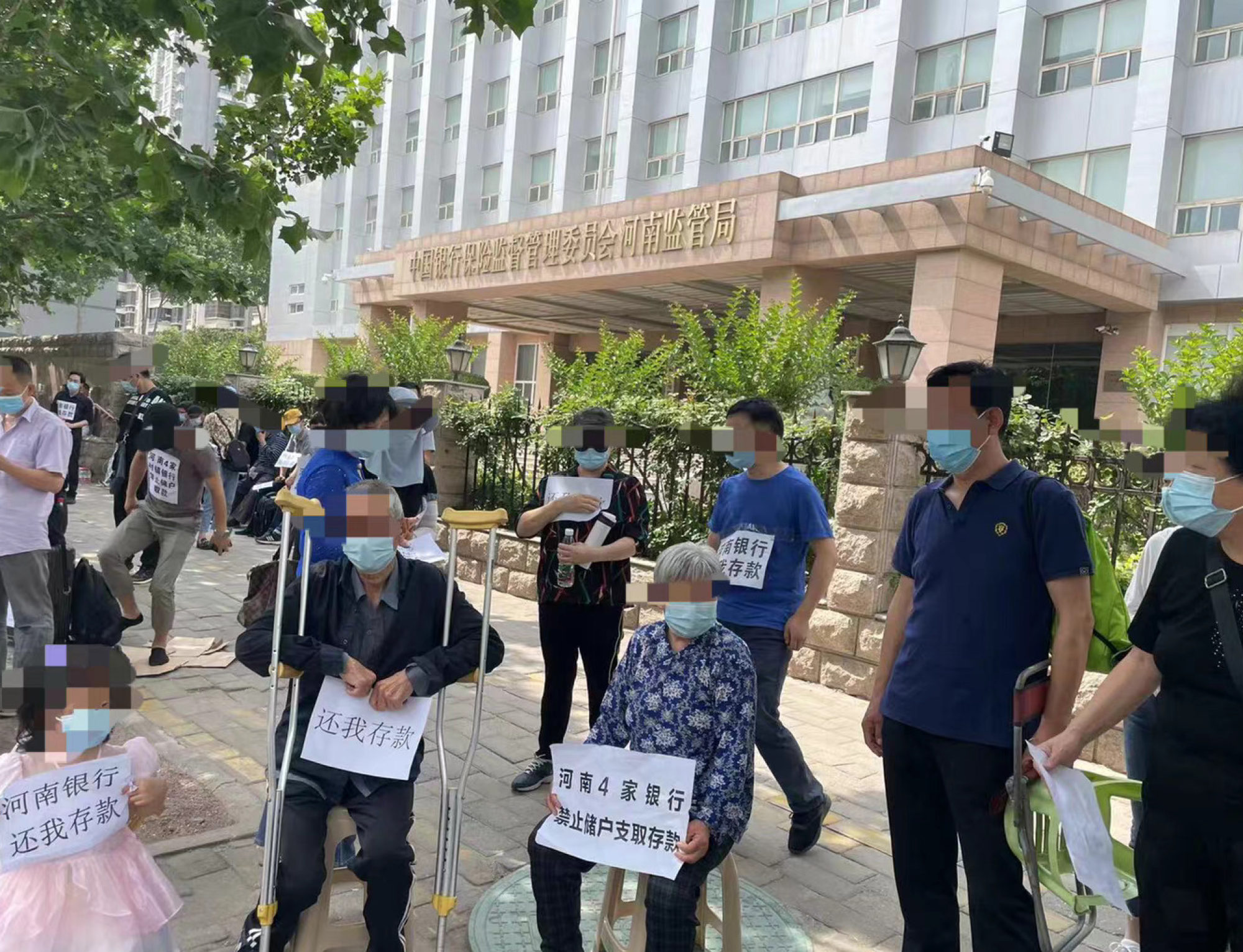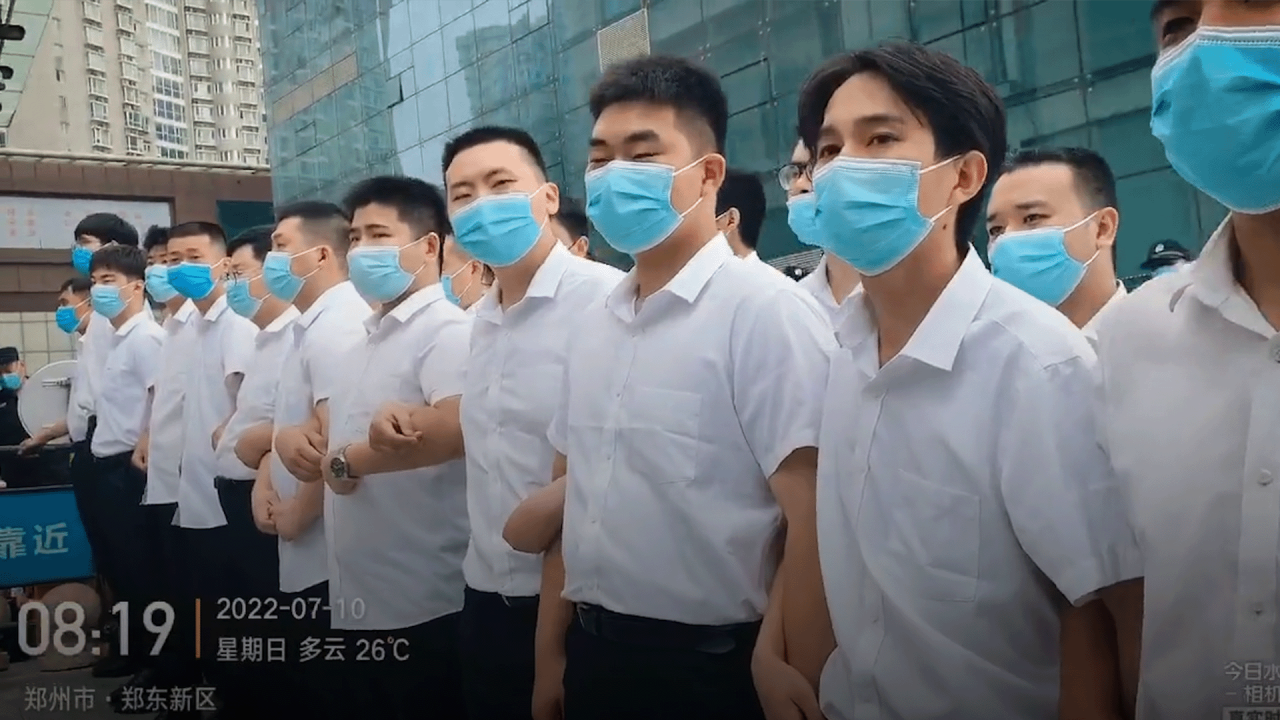
Explainer | What you need to know about the Henan banking crisis
- Customers at four rural banks in Henan province and one in neighbouring Anhui protested after being cut off from their savings since April
- President Xi Jinping has placed economic stability as a top priority and vowed to strengthen supervision within the state-dominated financial system
How did the Henan banking crisis start?
The cash crisis began to unfold when savers were denied access to their accounts at a number of rural banks in Henan and Anhui provinces due to a system upgrade on April 18.
Since then, deposits at Yuzhou Xinminsheng Village Bank, Shangcai Huimin County Bank, Zhecheng Huanghuai Community Bank and New Oriental Country Bank of Kaifeng in Henan province and Guzhen Xinhuaihe Village Bank in the neighbouring Anhui province have been affected.
Chinese regulators have not confirmed the amount of money that has been frozen, but depositors that have formed groups on various social media platforms to air their grievances claim the figure totals tens of billions of yuan.
Cash crisis amid China’s stalling economy as rural banks freeze accounts
The People’s Bank of China (PBOC) said in April that relevant departments had launched investigations into the four banks.
The central bank also stressed that it would cooperate with relevant departments to protect the legitimate rights and interests of consumers.
How did the Henan banking crisis escalate?
An estimated 1,000 depositors then gathered in front of the Zhengzhou sub-branch of the PBOC to protest on July 10.
Videos showed the protesters lined up in rows in front of the bank, holding banners that read “No deposits, no human rights”, “We are against Henan government’s corruption and violence”, chanting, “Henan banks, give me my money back” and “[Premier] Li Keqiang, investigate Henan”.
Were people protesting the Henan banking crisis flagged as a health risk?
Under the traffic light system introduced in early 2020 to contain the spread of the coronavirus, a red code will only be given if the user is a confirmed case, a close contact or from a high-risk area.
At least five officials and civil servants have been punished, but the authorities stopped short of referring to any potential legal violations, suggesting punishments would not go beyond internal disciplinary action.
Who is believed to be behind the Henan banking crisis?
The Xuchang Public Security Bureau in Henan said at the start of July that their investigation into the crisis was “progressing in an orderly manner” and that they had identified a man still being sought by police.
Lu Yi is suspected of using the Henan Xincaifu Group to effectively control the rural banks, however his whereabouts remain unknown.
Recently, [police] arrested a batch of suspects and have seized and frozen funds and assets involved in the case
The CBIRC had earlier said that a probe had found that Henan Xincaifu Group Investment Holding, a private investment firm with stakes in all four lenders, colluded with bank employees to illicitly attract public funds via online platforms.
Police added that the gang also used third-party online financial platforms, its own platform and a number of capital brokers to attract deposits and promote financial products.
“Recently, [police] arrested a batch of suspects and have seized and frozen funds and assets involved in the case,” the police statement said.
Will victims of the Henan banking crisis get their money back?
In China, deposits in both local and foreign currencies held by domestic banks for all businesses and individuals are guaranteed up to 500,000 yuan per depositor per bank, but it is not clear whether the rural banks will be covered by the scheme.

Repayment for customers of the five banks will start on July 15.
Accounts that are suspected to have involved illegal activities, or which received high interest from other channels, will not receive the repayment, the regulatory notices said.
Why are China’s rural banks important?
Over the years, in an attempt to attract funds outside their limited home bases, China’s small rural banks have partnered with non-proprietary online platforms, often offering returns that are slightly higher than similar deposit products from larger banks.
A typical deposit product offered by the four banks through third party platforms, such as Duxiaoman Financial, offers interest of between 4.1 to 4.5 per cent a year that can be rolled over for up to five years, although they have since been withdrawn.
Bank of China, one of China’s Big Four state-owned lenders, currently offers just 2.75 per cent a year on a five-year deposit product.
Bad loans and criminal charges expose risks at China’s small banks
China’s regulators have stepped up their supervision of the country’s 4,000 or so small lenders over the past few years, and in 2021, the PBOC said local lenders should not attract deposits from across the country using internet platforms as the central bank sought to limit small-town lenders from attracting business away from their home markets.
Another key problem is the shareholding structure of some small banks, which allows some shareholders to amass substantial stakes without regulatory approval, while also using lenders to secure loans.
Enodo Economics, a macroeconomic and political forecasting company in London, said that the current problems facing some of China’s small banks are not likely to lead to a collapse of the banking system.
“But in the People’s Republic of China, whose citizens have no chance to express views through the ballot box, domestic bank runs can signal falling confidence in the system [President Xi Jinping’s] tops,” the research firm said.

.JPG?itok=J8tgfPmW&v=1659948715)

